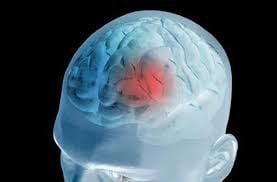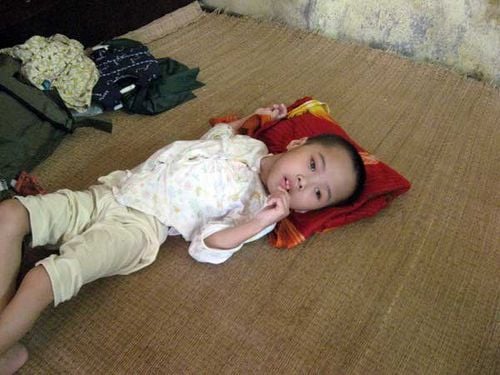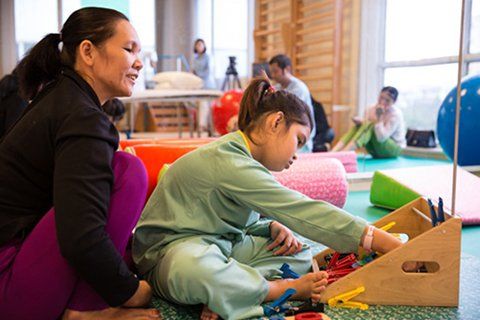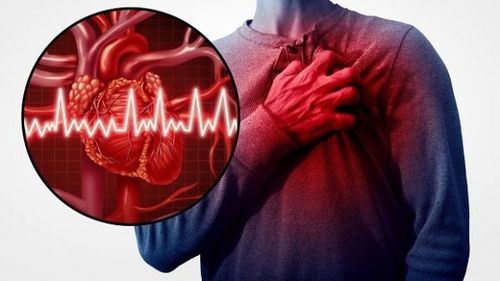This is an automatically translated article.
Spastic cerebral palsy accounts for about 70-90% of the total number of people with cerebral palsy, the most obvious manifestation in this group is the spastic muscles, difficulty in movement. Some severe cases can cause quadriplegia, in which the body and four limbs are paralyzed, and the muscles that control the mouth and tongue are also paralyzed.1. Can cerebral palsy be cured?
Cerebral palsy does not mean that the whole brain is damaged, but the brain is only partially damaged and mainly the part of the brain that is damaged is the part of the brain that controls language and movement. Although the damaged part of the brain is unlikely to fully recover, it does not get worse either.The problems caused by spastic cerebral palsy such as movements, posture and other related problems with cerebral palsy can be improved for the better or worse depending on the treatment we choose. treat.

Bại não không có nghĩa là toàn bộ não bị tổn thương mà não chỉ bị tổn thương một phần
2. How is cerebral palsy treated?
Treatment of cerebral palsy is a matter of great concern to many parents and wonder which method is effective. Currently, there are many methods of treating cerebral palsy such as acupuncture, acupressure, facial diagnosis, hyperbaric oxygen, stem cell transplant or rehabilitation... However, up to now, the world's science shows that Rehabilitation is a good and effective method of improving children with cerebral palsy.Treatment of cerebral palsy is not a treatment for 1-2 months, but treatment of cerebral palsy requires a combination of different methods. Treatment of cerebral palsy requires coordination between the family and the treating doctor, a combination of physical therapy and motor rehabilitation for children with motor retardation, speech therapy for children with delayed speech or language. difficulty with phonetics; Sensory conditioning for children with sensory disorders; individual skills training for children with cerebral palsy so that they can adapt to their own disabilities and improve their self-help skills.
2.1. Physiotherapy This is a rehabilitation method performed immediately after the diagnosis of spastic cerebral palsy, aimed at increasing the child's motor skills such as sitting, walking, improving muscle strength and preventing spasticity. muscle deformation. Devices such as splints, trays, or casts can be used to prevent muscle cramps and improve function of the legs and arms.
Besides, the application of rehabilitation physiotherapy also helps to overcome the abnormal inhibitory activities in pediatric cerebral palsy patients. During recovery training, it is important to pay attention to the symmetry between the two sides because this is the foundation to ensure the balance of the body as well as the child's perception.
For children, the treatment of spastic cerebral palsy with physical therapy is considered the safest and most effective way to support treatment. When detecting that a child has spastic cerebral palsy, it is advisable to practice physical therapy for the child as soon as possible because it will avoid muscle and joint contracture deformation and help the child develop motor skills through which the muscles and nerves will develop. Nerve conduction is vibrated and awareness gradually appears, helping the child to overcome the situation in the best way.
2.2. Orthopedic surgery This is a method to lengthen the diseased muscle in case the muscle contracture is too severe. For children with severe spastic cerebral palsy of the lower extremities, selective surgical resection of some of the dorsal nerve branches that control limb activity can permanently reduce spasticity as well as improve mobility. motor skills such as sitting, standing, walking. This surgery is usually done when the child is 2-6 years old.

Phẫu thuật chỉnh hình phương pháp để làm dài cơ bị bệnh trong trường hợp tình trạng co rút cơ quá nặng
In other words, stem cells are used to replace damaged cells, grow new brain cells and activate damaged (but not dead) cells. After that, the patient continued to be guided by the technician to perform rehabilitation exercises at the hospital and at home.
Stem cell treatment for cerebral palsy is safe for most patients. The sooner the patient is treated, the better the results will be. There are only a few cases of mild fever and pain, but with medication these side effects are controlled.
And according to statistics, many studies around the world show that stem cell application to treat cerebral palsy has a 60-70% success rate, the most obvious improvement is mobility (adaptation, integration). community), then language and cognitive abilities.
2.4. Education In addition to exercise, it is necessary to pay more attention to the communication and spirit of children with cerebral palsy to develop social communication skills. For older children, it is necessary to learn to be independent in daily activities (such as personal hygiene). Avoid letting children depend entirely on relatives, if they can do it on their own.
Treatment of cerebral palsy, besides the technical factors of medicine, also requires long-term, perseverance, the coordination of many specialties of pediatrics, psychology, linguistics... and most importantly, Parents and relatives must be patient and help their children.
Vinmec Times City International General Hospital has applied stem cell method to successfully treat many cases of cerebral palsy that seemed to have lost all hope. The whole process of stem cell transplantation for cerebral palsy at Vinmec is performed very closely, ensuring safety in accordance with international standards. All surgeries are performed by leading experts and doctors with modern machinery and medical equipment.
In addition, Vinmec has also developed a standard transplant procedure so that it can share experiences with colleagues, creating more opportunities for treatment for children with cerebral palsy across the country.
Please dial HOTLINE for more information or register for an appointment HERE. Download MyVinmec app to make appointments faster and to manage your bookings easily.













